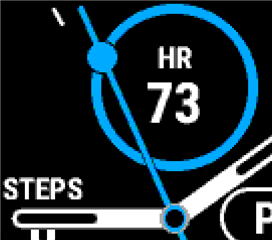Hi there.
I'm just trying to develop analog watch face for Fenix 5s Plus which is similar to built-in Garmin's analog watch face with hour/min/sec hands and three circles indicating steps, battery state, alt,... (you know this watch face from the Fenix 5 plus series box photos). The reason is to add some indicators missing in the built-in face, but preserve the design which I like. I have no problem with display buffering, 1 Hz hand update and so on, but with the graphics. When I draw the text, hands, and circles, only the text is anti-aliased (system font). But the built-in face has anti-aliased hands (even second hand) and circles/lines (I checked it by print-screen analysis and by magnifying glass).
The question is: Are the built-in faces running in virtual machine environment like a custom watch faces or are they written in C or even in Cortex-M4 assembly language with proprietary anti-aliasing graphic routines to save the battery as much as possible? Or did I miss anything - some anti-aliasing switch in Connect IQ 3.x ...?
Thanks for answer.



